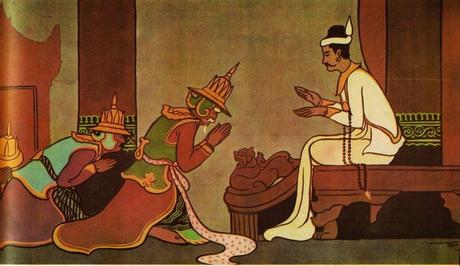Bimbisara The Great King of India
Bimbisara The Ancient King:
King Bimbisara was a famous King in ancient Indian history. He belonged to the Haryank dynasty and mentioned his narrations in Buddhist and Jain scriptures. He came to the throne at the very early age of 15 through his father. Brahmadatta, the King of Anga, defeated his father. When Bimbisara formed the Anga Kingdom and avenged his father’s defeat on Brahmadatta, he also brought a revolution against Magadha and, finally, conquested it. Defeating Magadha was a major conquest in his career.
His Matrimonial Policy:

He concentrated on expanding his kingdom by following the matrimonial alliances with his neighbouring realms. So he married his first wife, the sister of Prasenjit, the King of Kosala; with this marriage, Kasi came into his hands as dowry. In those days, Kasi was bringing a revenue of one lakh. His second wife was Chellana, daughter of Chief Chetaka; his third wife, Vaidehi and his fourth wife, Khema, the daughter of Madra, a mighty and prestigious King in those days.
Administration:
He followed the administration system of the Magadhan empire those are……..
The administration gave priority to the villages. The villages were the prime destinations for tax collections. The King appoints the chief to a town, and the head administrates with the help of the village council. The central government was divided into three distinct parts. They are 1. The Executive Department 2. The Judicial Department 3. The Military Department.
These three departments were looked after only by King Bimbisara. Mainly judiciary department works very strictly and imposes punishments very cruelly. The sentences were like amputation of hands or legs and unbearable imprisonment.
Religious Tolerance:
He maintained religious tolerance. He gave equal priority to Jainism and Buddhism. Jaina and Buddha’s scriptures mentioned Bimbisara and his life and administration. According to Jaina Uttaradhyana Sutra, Bimbisara meeting with Mahavira and his conversion to Jainism. Hence, Buddhist literature refers to the discussion of Bimbisara with Gautama seven years before the enlightenment and the second meeting after he had become Buddha. The Buddhist texts also refer to the Bimbisara conversion to Buddhism by Gautham Buddha himself.
King Bimbisara Death:
Bimbisara’s death is also mentioned in both Buddhist and Jain scriptures. Both said that he had been killed by his son Ajatasatru. Ajatasatru kept Bimbisara imprisoned, and there, he felt seriously ill. Despite Queen Challana, nursing cured his disease and begged Ajata Satru to free his father. But the King felt insulted about his position and killed himself.
Legacy of Bimbisara
The coronation of Bimbisara happened at the age of only 15 years. Since then, he succeeded in expanding the empire to all directions of India and patronising the various aspects of the religions of those days. In the Jain texts, the King was mentioned as Shrenik; he had a large standing army. According to the present historians, he maintained a more vast army than before. Bimbisara was a brave king and an amicable relations maintainer with neighbouring kingdoms. So he followed matrimonial alliances with neighbourliness states and succeeded. Therefore, he had a clear vision of ‘How to maintain the administration of the vast kingdom’. His political vision is still an admirable administrative principle to follow.
One thought on “Bimbisara The Great King of India”